Mole Removal In Delhi
In medical parlance, moles are defined as nevucellular skin occurrence surfacing on the various layers of the skin due to excess accumulation of melanin. Large moles carry the risk of skin cancer and can be ugly but not all small moles are ugly. In case of females, certain moles on the chin, cheeks actually enhance the beauty of the individual. Sunlight may have an adverse effect and can darken the moles. And most dermatologists in Delhi will tell you that sunlight can even worsen these moles leading to various kinds of skin cancer.
Causes and Symptoms:
Almost everybody has moles and exceptions prove the rule. These moles could be a result of the aggregation of blood vessels, (hemangiomas) or keratosis (benign or precancerous spots) appearing after 30 years.
Atypical or dysplastic moles:
These are hereditary in nature and belong to a certain class of moles that keep recurring or enlarging due to continuous exposure to sun rays. Areas which receive heavy sunlight see a high incidence of patients with white skin having these kinds of moles.
Junctional moles:
These are usually brown or slightly raised and may be flat in nature.
Congenital Navi:
Moles that occur in babies by birth are called as congenital navi and may be more than one or two in number.
Compound moles:
They range from tan to dark brown in colour and have melanocytes in both the dermis and the epidermis.
Dermal:
They range from flesh colour to brown and occur on the upper body (might contain hairs)
Sebaceous moles:
These are moles resulting from over-active oil glands that have a rough texture and are yellow in colour.
Blue moles:
Occurring mostly in women, they are usually found in head, neck, arms of women.
Diagnosis:
Large moles can be very unsightly and they might have dark hair and efforts must be directed towards removing them as quickly as possible. Empirical evidence shows that most moles appear during the first two decades of a person’s life. After 20, the occurrence of moles is less. Both surgical and laser methods are used to treat moles. Some patients may not respond to laser treatment as the light emitted from lasers might not penetrate deep enough. Laser treatment is continued for second or third time only when the results from the first session are satisfactory.
Treatment
Various treatment options can be employed to get rid of moles. Some of them are enlisted below:
Excision:
In plain simple words, it is cutting the mole in the natural skin crease line in order to remove them. Once removed, the incision is closed by surgery and within a few weeks, they are almost invisible. Results are excellent in most cases where moles are not stubborn and do not recur.Another good thing about this method is that there are no scar lines post treatment.
Round excision:
Tiny moles that are less than 1-mm in size can easily be removed by a round excision with a punch or blade.Larger moles require tissue expansion for complete removal.
Laser treatment:
Ideally suited for those with white skin or shallow moles coupled with light pigmentation. A combination of high and low intensity lasers are employed by the best dermatologists in Delhi in order to break up the mole, rectify the pigmentation disorder and erase imperfections. Older and deeper moles require more intense and longer treatment that shallow and newer moles. By directing hundreds of impulses per second, mole removal becomes easy and heat damage to the skin is minimized.
Erbium-YAG laser:
This is the latest technological innovation being used by dermatologists in Delhi. These are solid state lasers where the medium is erbium doped yttrium aluminium garnet. Er: YAG lasers emit a wavelength that is strongly absorbed by water and hydroxyapatite making it the ideal tool for cutting bones and soft-tissue. Since the light emitted by Er: YAG lasers is infrared light having a wavelength of 2940nm, it can help in breaking the pigments that are collected under the surface of the skin and making the mole become big. If the patient responds well after first treatment, then second or third treatment is undertaken. Acne scarring, deep scarring are also treated by these lasers. Other kinds of lasers that are less used but still prominent in the skin arena include Nd: YAG and Er: glass lasers.
Patient Gallery
-
Before
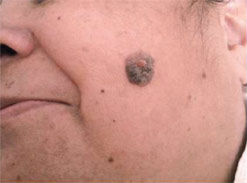
-
After
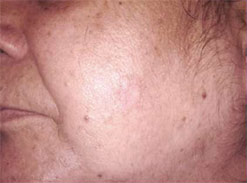
-
Before
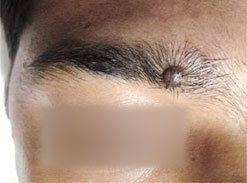
-
After
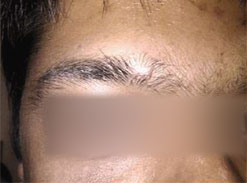
-
Before
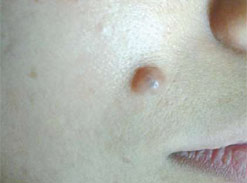
-
After
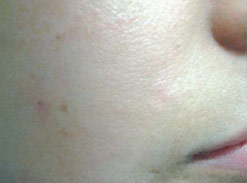
-
Before
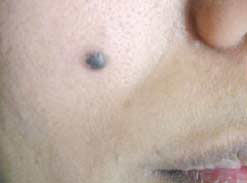
-
After
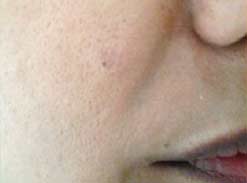
-
Before
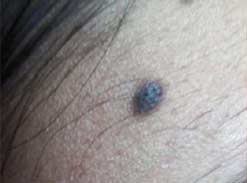
-
After
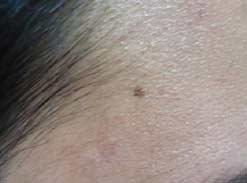
FAQs
Under several conditions, the removal of moles becomes imperative. If there is any change in their shape, size, or colour, you need to consult a dermatologist at the earliest since these changes can be a warning sign of skin cancer. Further, the removal of moles should be done by an expert professional.
Laser removal can be used on small and noncancerous moles. Ideally, those moles which do not protrude above the surface of the skin can also be treated with laser but it is best to obtain a consultation from an expert dermatologist for this purpose who will assess your moles to refer a treatment.
You should seek mole removal in Delhi if you notice any changes in the shape, size, or colour of your mole or if it begins to scab. In these cases, it is best to get the mole removed to eliminate the chance of skin cancer.
The mole removal treatment cost in Delhi includes a session of 5 – 10 minutes, during which local sting anaesthesia is administered and the mole is removed by the expert professional. Depending on your individual case, your dermatologist may recommend removing one or more moles at a time.
The mole removal treatment cost in Delhi varies from one patient to another. Some of the factors which account for the cost are depth, size, shape, and location of the mole. The technique used to remove the moles will also impact the cost which can vary between INR 3000 to INR 10000.
Most expert professionals in Delhi use a local sting anaesthetic on the area from which the mole is to be removed. This is why it is unlikely that you will feel any pain during the procedure. The patient will also have no feeling of the laser on or around their skin.
After removal of the mole, the affected area will have a scar that may appear swollen or red in the days to come after the laser removal. With the continued use of prescription treatments, the scarring and redness will subside in a matter of a few days.
When you go for treatment for mole removal in Delhi, an expert dermatologist will use a sophisticated laser machine to direct its rays at your mole. The cells which build the mole will be destroyed and in a few days, it will be as though there was no mole at that spot.
After obtaining treatment for mole removal in Delhi, it is highly recommended that you avoid the sun, avoid stretching the scar, apply pressure therapy, and ensure the cleanliness of the treatment spot. Only use skin products that are prescribed by your dermatologist.
After obtaining treatment for mole removal, a patient can return to work almost immediately. You will have to undertake the precautions which are meant for your safety so that you do not cause any irritation to your skin at the site of the treatment.
Usually, after mole removal, a scab will form on the skin. It may drop off in 10 to 14 days after the treatment, which is when you can start wearing makeup if you wish to. Before this, avoid using any form of makeup on your skin.
Laser treatment for mole removal is highly safe and effective in the present day. It ensures that any dangerous mole is removed from your skin at the first signs of any danger from them. Opt for a trusted and experienced dermatologist to get your mole removed.

